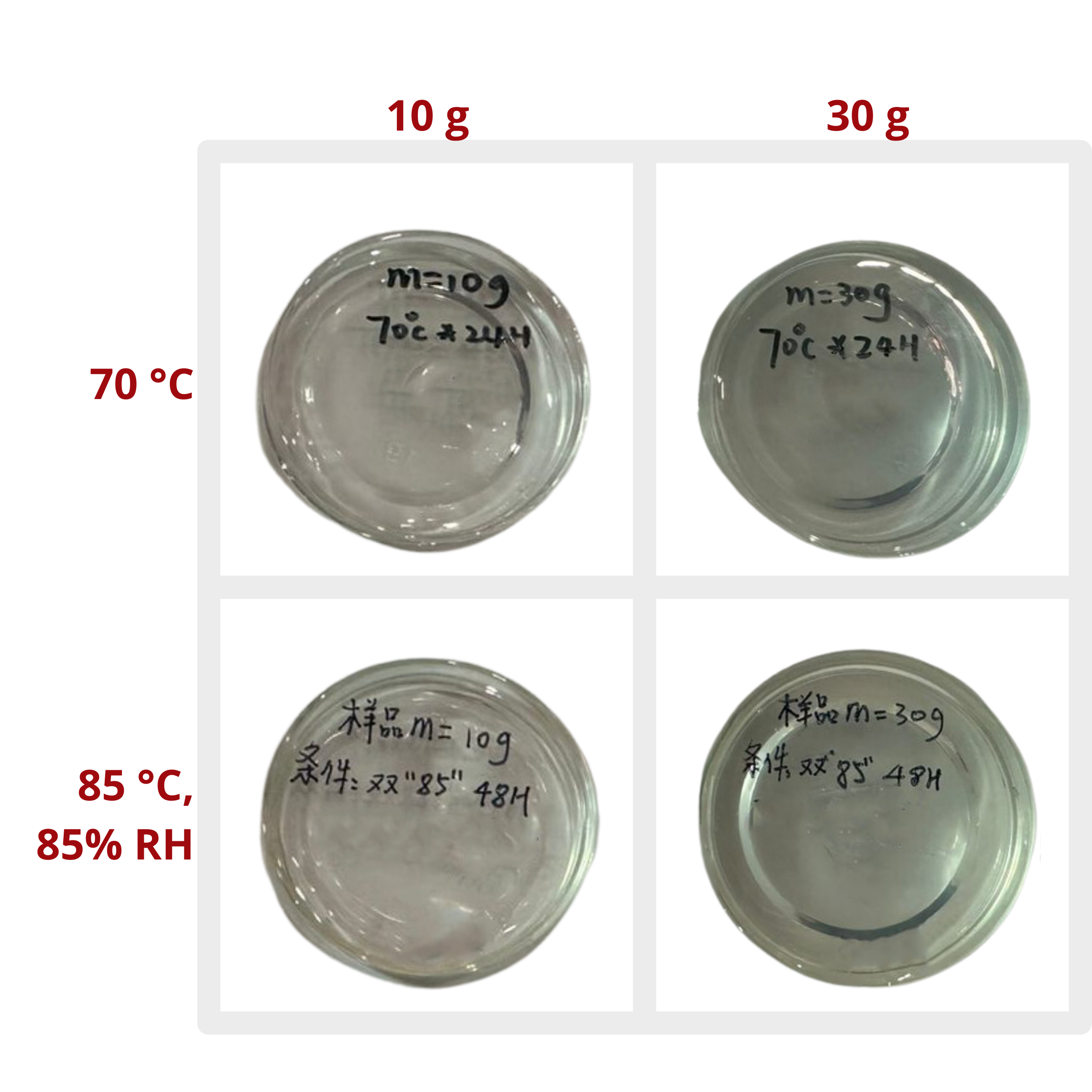OPTOLINQ LE-2161 | Two part epoxy resin
- Low viscosity
- Fast curing
- High transparency and good electrical properties
Product Description
OPTOLINQ LE-2161 is a transparent, two-part epoxy resin ideal for potting small components and sealing large dot matrix panels. It offers a fast curing rate, moderate curing temperature, and low viscosity post-mixing, and delivers exceptional electrical properties and transparency upon curing. To meet specific color requirements, it can easily be colored and diffused using specialized dye concentrates and diffusant concentrates.
OPTOLINQ LE-2161 serves as an ideal option for various electronic applications, including smart rings, due to its ability to encapsulate delicate electronic components while maintaining transparency and providing robust electrical insulation.
Cure Schedule
- 24h @ 25°C
- 4h @ 50–60°C
Technical Specifications
| General Properties | |||||
| Mix Ratio Mix Ratio The amount of a constituent divided by the total amount of all other constituents in a mixture | 3:1 | ||||
| Pot Life Pot Life Pot life is the amount of time it takes for the viscosity of a material to double (or quadruple for lower viscosity materials) in room temperature after a material is mixed. It is closely related to work life but it is not application dependent, less precise and more of a general indication of how fast a system is going to cure. | 1.67–2 hours | ||||
| |||||
| Physical Properties | |||||
| Viscosity Viscosity Viscosity is a measurement of a fluid’s resistance to flow. Viscosity is commonly measured in centiPoise (cP). One cP is defined as the viscosity of water and all other viscosities are derived from this base. MPa is another common unit with a 1:1 conversion to cP. A product like honey would have a much higher viscosity -around 10,000 cPs- compared to water. As a result, honey would flow much slower out of a tipped glass than water would. The viscosity of a material can be decreased with an increase in temperature in order to better suit an application | 548 mPa.s | ||||
| Chemical Properties | |||||
| Water Absorption | 0.3 % | ||||
| Electrical Properties | |||||
| Dielectric Strength Dielectric Strength Dielectric strength is measured in kV per mm and is calculated by the Breakdown voltage divided by the thickness of the tested material. Those two properties go hand in hand and while Breakdown voltage is always thickness dependent, dielectric strength is a general material property. As an example, the dielectric strength of Polyimide is 236 kV/mm. If we place 1mm of Polyimide between two electrodes, it will act as an insulator until the voltage between the electrodes reaches 236 kV. At this point it will start acting as a good conductor, causing sparks, potential punctures and current flow. | 20 kV/mm | ||||
| Surface Resistivity | >1.5×10¹⁵ Ohms/sq | ||||
| Volume Resistivity Volume Resistivity Volume resistivity, also called volume resistance, bulk resistance or bulk resistivity is a thickness dependent measurement of the resistivity of a material perpendicular to the plane of the surface. | >1.6×10¹⁵ Ohms⋅cm | ||||
| Mechanical Properties | |||||
| |||||
| Thermal Properties | |||||
| |||||
Additional Information
Anti-yellowing Performance of LE-2161
The following optical images of cured Optolinq LE-2161 samples (10 and 30 g) demonstrate its anti-yellowing capability under two distinct conditions: exposure to 70 °C for 18 hours and to 85 °C, 85% RH for 24 hours. The observed cloudiness is due to the presence of an anti-yellowing filler, a critical component for smart ring technology. This filler serves a crucial purpose without compromising the transmittance of the encapsulant, although it's important to note that the material's thickness can influence this aspect.

Recommended Curing Conditions
Cure at 25 °C for 24 h or at 50–60° C for 4 h.
These guidelines offer recommended curing parameters. Define the exact curing parameters to align with your product specifications.
Precautions for Use
- The usable time after A and B are mixed strongly depends on the temperature and mixing volume. Higher temperatures and larger mixing volumes lead to shorter working times. Therefore, the mixing temperature and amount should be determined based on on-site procedures.
- Use the product in a clean and well-ventilated workplace.
- Wear appropriate safety equipment before use and avoid direct contact with the body. Please read the Material Safety Data Sheet (SDS) carefully before using.
Please note that the provided information is based on available data and typical conditions. For specific applications and detailed test results, refer to the actual test data and conduct appropriate certifications.
Storage and Handling
Store in a ventilated, dry, and clean environment. Keep away from fire and heat sources. It is strictly forbidden to store in outdoor environments. The validity time will vary depending on storage conditions. At proper storage conditions, Part A and Part B have a shelf life of 183 and 93 days, respectively. Shelf life can be extended by using cold storage.



